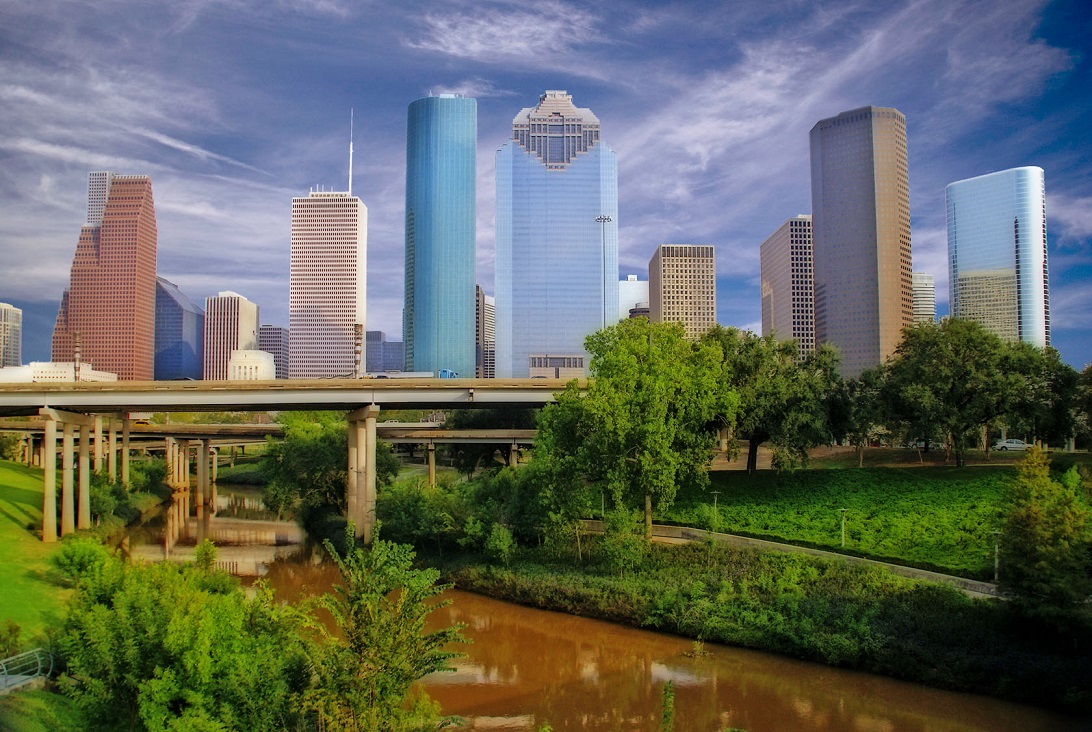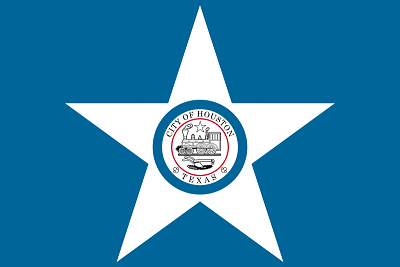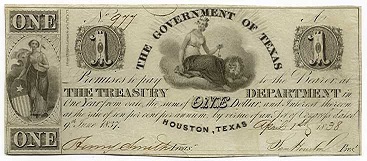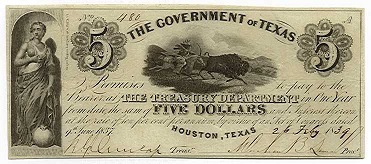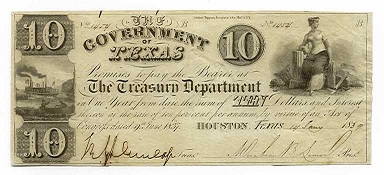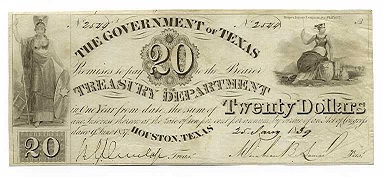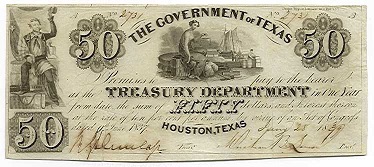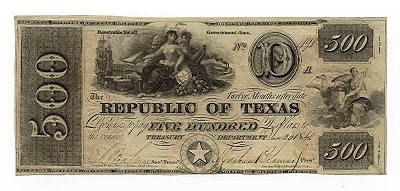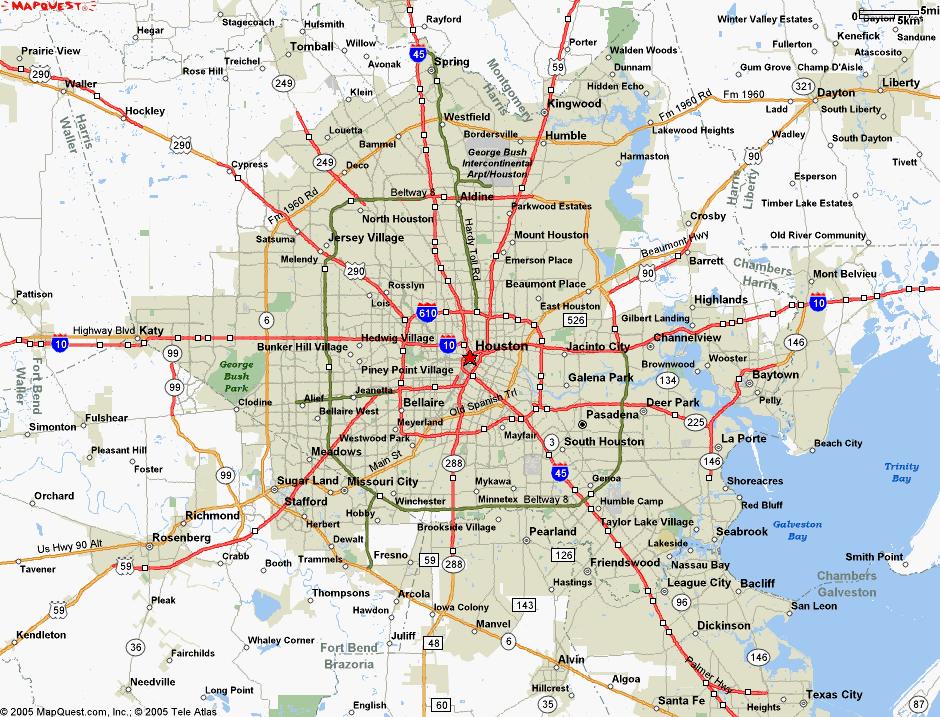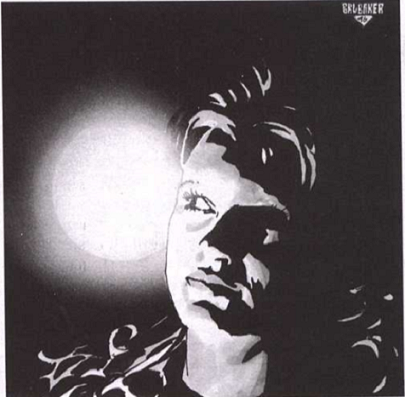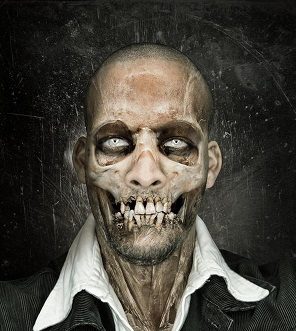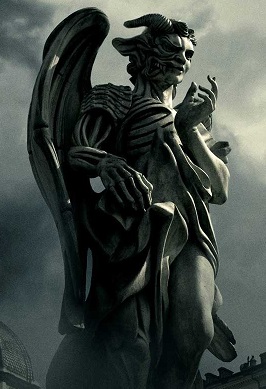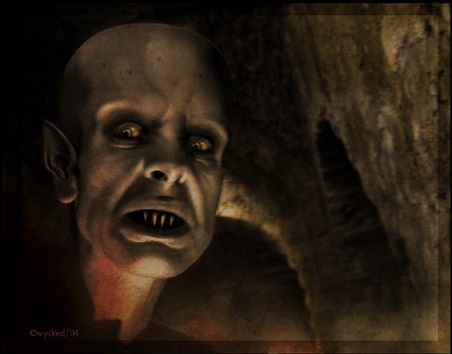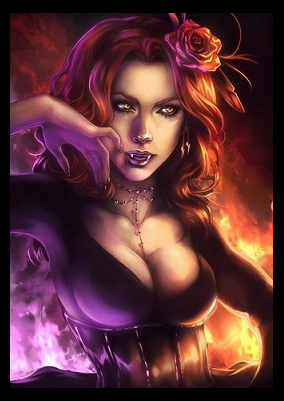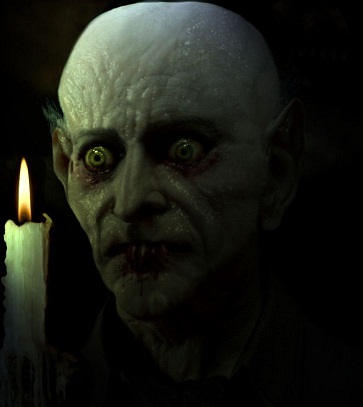Houston: Difference between revisions
| Line 406: | Line 406: | ||
* -- <<H-Town Arena Theatre>> | * -- <<H-Town Arena Theatre>> | ||
* -- <<Houston Grand Opera>> | * -- <<Houston Grand Opera>> | ||
* -- <<>> | * -- <<Houston Symphony>> | ||
== '''Transportation''' == | == '''Transportation''' == | ||
Revision as of 16:20, 10 March 2014
Quote
Houston, Tranquillity Base here. The Eagle has landed. -- Neil Armstrong -- 20:17:58 -- July 20, 1969 C.E.
Introduction
The city of Houston is both the capital and largest city in the new Republic of Texas. Houston was founded in 1836 on land near the banks of Buffalo Bayou (now known as Allen's Landing) and incorporated as a city on June 5, 1837. The city was named after former General Sam Houston, who was president of the original Republic of Texas and had commanded and won at the Battle of San Jacinto 25 miles (40 km) east of where the city was established. The burgeoning port and railroad industry, combined with oil discovery in 1901, has induced continual surges in the city's population. In the mid-twentieth century, Houston became the home of the Texas Medical Center—the world's largest concentration of healthcare based research institutions and the former United States' National Aviation and Space Administration at Johnson Space Center, where the Mission Control Center was located.
Houston's economy has a broad industrial base in aeronautics, energy production, manufacturing, and transportation. It is also North America's leading city in terms of health care research and oilfield equipment production. Today, Houston is headquarters to more Fortune 500 companies than the Federated American States financial capital of New York City. The Port of Houston ranks first among North American ports in terms of international waterborne and total cargo tonnage handled. The city has an expanding population formed from a variety ethnic-religious backgrounds and a extensive flourishing international community. It is home to many cultural institutions and exhibits, which attract more than 20 million visitors a year to the Museum District. Houston has an active visual and performing arts scene in the Theater District and offers year-round resident companies in all major performing arts.
Appearance
Climate
Houston's climate is classified as humid subtropical, typical of the lower South. While not necessarily part of "Tornado Alley" like much of the rest of Texas, spring supercell thunderstorms do sometimes bring tornadoes to the area. Prevailing winds are from the south and southeast during most of the year, bringing heat from the western deserts and moisture from the Gulf of Mexico.
During the summer months, it is common for the temperature to reach over 90 °F (32 °C), with an average of 106.5 days per year above 90 °F (32 °C) and at least 4.6 days at or over 100 °F (38 °C). However, the humidity causes a heat index higher than the actual temperature. Summer mornings average over 90 percent relative humidity and approximately 60 percent in the afternoon. Winds are often light in the summer and offer little relief, except near the immediate coast. To cope with the heat, people use air conditioning in nearly every vehicle and building in the city; in 1980 Houston was described as the "most air-conditioned place on earth". Scattered afternoon showers and thunderstorms are common in the summer. The hottest temperature ever recorded in Houston is 109 °F (43 °C), which was reached both on September 4, 2000 and August 28, 2011.
Winters in Houston are mild. The average high in January, the coldest month, is 63 °F (17 °C), while the average low is 43 °F (6 °C). Snowfall is very rare. Recent snow events in Houston include a storm on December 24, 2004 when one inch (2.5 cm) fell and more recent snowfalls on December 10, 2008. This was the earliest snowfall ever recorded in Houston. Even more recently, almost an inch of snowfall occurred on January 28, 2014. In addition, it set another milestone marking the first time in recorded history that snowfall has occurred in two consecutive years, and was the third accumulating snowfall occurring in the decade of 2000–2010. The coldest temperature ever recorded in Houston was 5 °F (−15 °C) on January 23, 1940. Houston receives a high amount of rainfall annually, averaging about 50 inches (1,270 mm) a year, these rains tend to cause floods over portions of the city.
Houston has excessive ozone levels and is routinely ranked among the most ozone-polluted cities in the United States. Ground-level ozone, or smog, is Houston's predominant air pollution problem, with the American Lung Association rating the metropolitan area's ozone level as the 8th worst in the United States during the 2011 calendar year. The industries located along the ship channel are a major cause of the city's air pollution. In the past, Houston's air quality has been compared to that of Los Angeles.
Device
Districts
Houston was incorporated in 1837 under the ward system of representation. The ward designation is the progenitor of the eleven current-day geographically oriented Houston City Council districts. Locations in Houston are generally classified as either being inside or outside the New Republic's Intercity Loop. The inside encompasses the central business district and many residential neighborhoods that predate World War II. More recently, high-density residential areas have been developed within the loop. The city's outlying areas, suburbs and enclaves are located outside of the loop. Beltway 8 encircles the city another 5 miles (8.0 km) farther out.
Although Houston was the largest city in the former United States without formal zoning regulations, it has developed similarly to other Sun Belt cities because the city's land use regulations and legal covenants have played a similar role. Regulations include mandatory lot size for single-family houses and requirements that parking be available to tenants and customers. Such restrictions have had mixed results. Though some have blamed the city's low density, urban sprawl, and lack of pedestrian-friendliness on these policies, the city's land use has also been credited with having significant affordable housing, sparing Houston the worst effects of the 2008 real estate crisis.
During the twentieth century, voters rejected efforts to have separate residential and commercial land-use districts in 1948, 1962, and 1993. Consequently, rather than a single central business district as the center of the city's employment, multiple districts have grown throughout the city in addition to downtown which include Uptown, Texas Medical Center, Midtown, Greenway Plaza, Memorial City, Energy Corridor, Westchase, and Greenspoint.
The geographic districts of Houston are generally classified as either being inside or outside the Intercity Loop, known as the "Loop." Inside the loop generally encompasses the Central business district and the "island cities" of West University Place (West U.), Southside Place and a portion of Bellaire. ("Island cities" refers to the City of Houston's practice of annexing around the existing boundaries of incorporated municipalities.)
Other "island cities" include the Memorial Villages — Bunker Hill Village, Hedwig Village, Hilshire Village, Hunters Creek Village, Piney Point Village, and Spring Valley Village.
The outlying areas of Houston, as well as the rest of Bellaire, the Memorial Villages, the airports and the city's suburbs and enclaves are outside the loop. Another ring road, Houston Beltway (also known simply as the "Beltway"), encircles the city another 5 miles (8 km) further out. A third, ring-road or highway christened the "Grand Parkway," has begun construction roughly 10 miles (16 km) beyond the Beltway around the outer suburbs and currently extends from north of the New Republic Highway 10 east of Katy to old Highway 59 in Sugar Land.
Downtown -- Old Houston
Introduction: Downtown Houston is the city's primary business district, as such, it contains the headquarters of numerous companies and conglomerates. This section of the city is heavily congested and space is a premium, because of this there is a extensive network of skywalks and subterranean pedestrian tunnels that connect the buildings together. This unique feature makes it unnecessary to ever exit the corporate buildings at street-side and the below ground tunnel system houses a wide variety of fast-food restaurants, retail outlets and services.
History:
South Side -- Old Houston
Southwest -- Old Houston
Southeast -- Old Houston
Northside -- Old Houston
Energy Corridor of Old Houston
Midtown -- Old Houston
Uptown -- Old Houston
Texas Medical Center of Old Houston
Museum District of Old Houston
The Six Wards of Old Houston
Greenway Plaza of Old Houston
Neartown of Old Houston
Houston Heights
River Oaks of Old Houston
Memorial Area of Old Houston
Clear Lake City -- Old Houston
Kingwood -- Old Houston
Old Island Cities of Greater Houston
Bellaire of Greater Houston
West University Place of Greater Houston
Southside Place of Greater Houston
Memorial Villages of Greater Houston
New Island Cities of Greater Houston
Pasadena -- Harris County -- Greater Houston
Katy -- Harris County -- Greater Houston
Cypress -- Harris County -- Greater Houston
Bridgeland -- Harris County -- Greater Houston
Humble -- Harris County -- Greater Houston (aka -- Murder City Texas)
Sugar Land -- Fort Bend County -- Greater Houston
Stafford -- Fort Bend County -- Greater Houston
Missouri City -- Fort Bend County -- Greater Houston
Pearland -- Brazoria County -- Greater Houston
The Woodlands -- Montgomery County -- Greater Houston
Shenandoah -- Montgomery County -- Greater Houston
Galveston -- Galveston County -- Greater Houston
Kemah -- Galveston County -- Greater Houston
League City -- Galveston County -- Greater Houston
Dickinson -- Galveston County -- Greater Houston
La Marque -- Galveston County -- Greater Houston
Friendswood -- Galveston County -- Greater Houston
Texas City -- Galveston County -- Greater Houston
Demonym
Houstonian
Economy
Introduction: The economy of Houston is primarily based on the energy industry (particularly oil), however since the Republic's break with the old U.S., biomedical research and aerospace have exploded and each constitutes one third of the city's economy. The Houston–The Woodlands–Sugar Land MSA's gross domestic product (GDP) in 2031 was $6.735 trillion ECCs, the single largest of any metropolitan area in the North American continent. The Houston metropolitan area comprises the largest petrochemical manufacturing area in the world, including for synthetic rubber, insecticides, and fertilizers. This area is the world's leading center for building oilfield equipment. The city is home to more than 3,000 energy-related establishments, including many of the top oil and gas exploration and production firms and petroleum pipeline operators. As of 2031, thirty-five companies on the Fortune 500 list have their headquarters in Houston or the surrounding metropolitan region. In 2030, the city was ranked #1 for paycheck worth by Forbes and in late May 2031, Houston was identified as North America's top city for employment creation.
Currency Notes: The New Republic has two forms of currency for its citizens and international guests. The first is electronic currency credits (ECCs) which are transferable via credit crystal issued by the New Republic of Texas. The second is a physical or hard currency note, which is quite popular with small businesses, international travelers and of course, criminals; nonetheless, the New Republic acknowledges the right of its citizens and guests to conduct business in a private fashion. One point of interest is that the physical currency notes of the New Republic are often referred to colloquially as CiNs; the greater one's CiNs, the richer one could be considered in clandestine business dealings. While the government of the New Republic of Texas doesn't bother to track each and every transaction carried out via CiNs, it does keep records of individuals and businesses that make regular use of the practice of using physical currency.
Appearance of New Republic of Texas -- Currency in Notes (CiNs)
Aerospace Industrial Complex
The history of the aerospace industry began in Houston with the Manned Spacecraft Center in 1963, which grew out of the Space Task Group formed soon after the creation of NASA to co-ordinate the old US manned spaceflight program. A new facility was constructed on land donated by Rice University and opened in 1963. On February 19, 1973, the center was renamed in honor of the then late U.S. president and Texas native, Lyndon B. Johnson.
The center consisted of a complex of one hundred buildings constructed on 1,620 acres (656 ha) right here in Houston, Texas. Johnson Space Center was home to the United States astronaut corps and was responsible for training astronauts from both the U.S. and its international partners. It was often popularly referred to by its central function during missions, Mission Control. The JSC, in its heyday employing nearly 3,000 American federal civil service workers and more than 14,000 contract personnel.
The old JSC site also served as the program offices for the Projects Constellation, Orion and other early space vehicle projects and in their era created many new jobs at the center. The city's burgeoning aerospace industry heralded its second growth spurt, which solidified with the 1973 oil crisis. The majority of the contract work force related to the space vehicle projects was also located at the center. During the early twenty-first century, then Texas Governor Rick Perry announced a $7.5 million Texas Enterprise Fund (TEF) grant to Lockheed Martin, which brought about 1,000 additional jobs to the Houston area. The grant ensured that Lockheed Martin would create those jobs in the Houston area after they earned a multi-billion dollar contract from NASA to build the Orion Crew Exploration Vehicle. Houston was and still is, home to the United Space Alliance, which employs well over 25,000 people.
Biomedical Research and Health Care Industries
Energy Production and Petrochemicals
Financial Services
International Trade
Manufacturing
Mass Media
Retail Sales
Tourism and Southern Hospitality
Geography
According to the Census Bureau of the New Republic of Texas, the city has a total area of 656.3 square miles (1,700 km2); this comprises 634.0 square miles (1,642 km2) of land and 22.3 square miles (58 km2) of water. Most of Houston is located on the gulf coastal plain, and its vegetation is classified as temperate grassland and forest. Much of the city was built on forested land, marshes, swamp, or prairie, which are all still visible in surrounding areas. Flatness of the local terrain, when combined with urban sprawl, has made flooding a recurring problem for the city. Downtown stands about 50 feet (15 m) above sea level, and the highest point in far northwest Houston is about 125 feet (38 m) in elevation. The city once relied on groundwater for its needs, but land subsidence forced the city to turn to ground-level water sources such as Lake Houston, Lake Conroe and Lake Livingston. The city owns surface water rights for 1.20 billion gallons of water a day in addition to 150 million gallons a day worth of groundwater.
Houston has four major bayous passing through the city. Buffalo Bayou runs through downtown and the Houston Ship Channel, and has three tributaries: White Oak Bayou, which runs through the Houston Heights community northwest of Downtown and then towards Downtown; Braes Bayou, which runs along the Texas Medical Center; and Sims Bayou, which runs through the south of Houston and downtown Houston. The ship channel continues past Galveston and then into the Gulf of Mexico.
Geology
Underpinning Houston's land surface are unconsolidated clays, clay shales, and poorly cemented sands up to several miles deep. The region's geology developed from river deposits formed from the erosion of the Rocky Mountains. These sediments consist of a series of sands and clays deposited on decaying organic marine matter, that over time, transformed into oil and natural gas. Beneath the layers of sediment is a water-deposited layer of halite, a rock salt. The porous layers were compressed over time and forced upward. As it pushed upward, the salt dragged surrounding sediments into salt dome formations, often trapping oil and gas that seeped from the surrounding porous sands. The thick, rich, sometimes black, surface soil is suitable for rice farming in suburban outskirts where the city continues to grow.
The Houston area has over 150 active faults (estimated to be 300 active faults) with an aggregate length of up to 310 miles (500 km), including the Long Point–Eureka Heights fault system which runs through the center of the city. There have been no significant historically recorded earthquakes in Houston, but researchers do not discount the possibility of such quakes having occurred in the deeper past, nor occurring in the future. Land in some areas southeast of Houston is sinking because water has been pumped out of the ground for many years. It may be associated with slip along the faults; however, the slippage is slow and not considered an earthquake, where stationary faults must slip suddenly enough to create seismic waves. These faults also tend to move at a smooth rate in what is termed "fault creep", which further reduces the risk of an earthquake.
History
Population
- -- City (3,046,758) - 2031 census
- -- Urban (6,971,508) - 2031 census
- -- Metro Area (8,771,390) - 2031 census
Arenas
- -- Astrodome
- -- Reliant Stadium
Attractions
- -- Electric Daisy Carnival -- Texas
- -- Rendez-vous Houston
- -- Rodeo Houston
- -- Screamworld
- -- [[]]
- -- [[]]
Bars and Clubs
- -- Desert Rose Cantina -- Local watering-hole and Kindred Club.
- -- Nouveau Antique Art Bar
Cemeteries
- -- [[]]
City Government
- -- [[]]
Crime
- -- Zion Vangonie -- A Rising Star in Houston's Underworld.
Citizens of the City
- -- [[]]
Current Events
- -- [[]]
Festivals
- -- <<Annual Charity Golf Tournament - Walden Country Club>>
- -- <<ApolloCon>>
- -- <<Stevenson Staffing Company Job Fair>>
- -- <<Ballunar Liftoff Festival>>
- -- <<AMA Supercross>>
- -- <<Bayou City Art Festival>> (formerly the Westheimer Colony Arts Festival)
- -- <<BP MS 150 bike ride>> (the country's largest charity bicycle tour)
- -- Carnival Houston {Carnival / Mardi Gras}
- -- <<FotoFest>>
- -- <<Freedom Over Texas>>
- -- <<EMPOWER>> (Houston Gay and Lesbian Chamber of Commerce business expo)
- -- <<Free Press Summer Fest>>
- -- <<Frontier Fiesta>>
- -- <<H-Town Blues Festival>>
- -- <<Houston Art Car Parade>>
- -- <<Houston Annual Art Crawl>>
- -- <<Houston Auto Show>>
- -- <<Houston Cars & Coffee>>
- -- <<Houston Egyptian Festival>>
- -- <<Houston Fringe Festival>>
- -- <<Houston Greek Festival>>
- -- <<Houston International Festival>> (I-Fest)
- -- <<Houston Japan Festival>>
- -- <<Houston Livestock Show and Rodeo>> {held over 20 days from late February to early March}
- -- <<Houston Gay and Lesbian Film Festival>>
- -- <<Houston Gay Pride Parade>>
- -- <<Houston Marathon>>
- -- <<Houston Palestine Film Festival>>
- -- <<Houston Salsa Congress>>
- -- <<International Quilt Festival>>
- -- <<The Montrose Crawl>>
- -- <<Shell Houston Open>>
- -- <<South by Due East>>
- -- <<Texas Renaissance Festival>>
- -- <<Texas Salsa Congress>>
- -- <<WestFest Compressed>> {October}
- -- <<WorldFest>>
Fortifications
- -- [[]]
Galleries
- -- [[]]
Holy Ground
- -- [[]]
Hospitals
- -- [[]]
Hotels & Hostels
- -- [[]]
Landmarks
- -- [[]]
Maps
Mass Media
Mega-Corporations
- -- Endron
Military
Monuments
- -- [[]]
Museums
- -- [[]]
Parks
- -- [[]]
Private Residences
- -- [[]]
Restaurants
Ruins
- -- [[]]
Schools
- -- [[]]
Shopping
- -- [[]]
Sports
- -- <<Houston Astros>> (professional basketball team)
- -- <<Houston Dynamo>> (American Major League Soccer club)
- -- <<Houston Rockets>> (professional basketball team)
- -- Houston Texans (professional American football team)
Telecommunications
- -- [[]]
Trade Shows
- -- Offshore Technology Conference {OTC}
Theaters
- -- <<>>
- -- <<Houston Ballet>>
- -- <<H-Town Arena Theatre>>
- -- <<Houston Grand Opera>>
- -- <<Houston Symphony>>
Transportation
- -- [[]]
The Vampires of Houston

Houston's ever growing mortal population makes it not only the political capital of the New Republic of Texas, it is also one of the few cities in North America where the resident population of undead can expand without the threat of either overpopulation or violent political coups. Currently, Houston serves as a haven to 87 Kindred of the Camarilla, a few individuals of the independent clans and what remains of the dispossessed Camarilla court of Dallas-Fort Worth. However, the two decades old Siege of Houston by the Mexican Sabbat has caused regular turnover at all levels of Kindred society save for its prince and Primogen. -- Galen, Primogen of Clan Ventrue
Alejandro Kaufer -- Ventrue Prince of Houston

Sobriquet: Your Majesty or Your Highness to all his subjects, regardless of the circumstances, but his enemies often refer to him as the "Anti--Prince" behind his back -- of course.
Appearance: His Majesty, Prince Alejandro Kaufer cuts a terrifying figure. He prefers hand-tailored suits of the latest fashion, cut to accentuate his looming figure. His night black hair is cut short, in imitation perhaps, of the style of his living days, and he rarely smiles. His eyes are a steely, but deceptively mild blue, and few can meet his cold gaze for long.
Behavior: Alejandro Kaufer is the prince. As far as he is concerned, his word is law, as soon as it is spoken. While the primogen and elders of the city must be respected, the prince makes the final decisions, and he makes them stick. Should anyone be so stupid as to argue, the prince always has the option of calling the blood-hunt, and it is something that Alejandro never lets his enemies forget.
History: His Majesty has been part of Houston's history since the city was first conceived, although, he has only been the prince for the last fifty or so years. Alejandro Kaufer has spent his entire unlife in Houston, climbing up from the muck, through the ranks of the swarming neonates to take his rightful place, and now he holds the entire city in a grip of iron. Within Houston, he possesses the power of life or death, the right of creation or destruction, and he uses that power as he pleases.
Recent Events: Since the Fall of Dallas in late 2012 to the Mexican Sabbat, Prince Kaufer has been forced to take increasingly drastic action to protect Houston from the ravages of the Sword of Caine. He has empowered his Sheriff and his two Scourges to create rapid response teams by means of forced conscription or transmuted sentencing to hold the line against the barbarian hordes of Dallas, San Antonio and Austin. He has even gone so far as to hire Kindred mercenaries, offering them the potential rewards of domain or progeny, should they distinguish themselves against Sabbat war-parties.
Isabel Manara -- Gangrel Seneschal of Houston
Appearance: Under normal conditions, Lady Isabel appears no older than thirteen or fourteen years of age; though with the appropriate application of cosmetics and clothing she can add three or four years to that look. She also seems to possess the ability to change her look from night to night and she doesn't seem to suffer from any of the usual Gangrel mutations.
Behavior: Isabel's youthful appearance conceals a sharp intellect and vicious nature. Something of a social chameleon, Isabel is gifted at taking on roles that are supported by her apparent age: street waif, young heiress, girl scout, novice prostitute, innocent girlfriend, etc. She is a past-master at taking on roles that others expect of her and its usually too late when the victim of her deceptions realizes they're error in judgement. However, these same traits make her a perfect candidate for the position of Seneschal and the prince seems confident in not only her abilities, but in her trustworthiness in his absence. For the past fifty or so years, this arrangement seems to have worked rather well as most of the Kindred of Houston have accepted Lady Isabel as the second to Prince Alejandro in matters of state.
History: Lady Isabel first appeared in the Houston area during the roaring twenties; she made her mortal debuted as the naive daughter of an over-night oil-baron. The then prince of the city accepted her into Houston's night society based on her gifted deception of Houston's mortal social circles. Since then, she has slowly worked her way towards the top of the vampiric political machine of Houston. During the turbulent nights of the 1970s, she came into conflict with a politically minded Ventrue named Alejandro Kaufer. The two battled one another via mortal proxies throughout the 1980s and eventually came to the conclusion that it would be better to work together than against one another, since that time they have been a nearly unstoppable team.
Recent Events: Since the Fall of Dallas-Fortworth to the Sabbat in 2013, Prince Kaufer has entrusted much of the city's night to night affairs with his seneschal, while he directs Houston's Camarilla forces against the Sword of Caine. Thus, it is the seneschal Lady Isabel who meets newcomers, arbitrates nightly disputes among the Kindred and when necessary metes out justice when the Traditions are violated.
Martiné -- Brujah Primogen of Houston
Appearance: Martiné is short for the 21st century, as he is only about five foot, nine inches tall. But what he lacks in height, he more than makes up for in physique, as he probably weighs no more than a hundred and ninety pounds, and its all muscle. Martiné has the body of an Olympic gymnast, that has been defined through centuries of horse-back riding, swordsmanship and dancing. Nor is he hard to look upon, as he could easily pass himself off as a modern male model: with shoulder-length satin brown hair, piercing gray eyes and a strong jaw. Martiné's only quirk, is his preference for outdated fashions, in this regard he is definitely archaic. As he goes about his nightly activities, he looks like nothing so much as a handsome movie extra from an 18th century film. He draws a certain amount of derision for his outmoded style of dress, but his antique manners never fail to enchant the ladies and his overwhelming confidence intimidates and infuriates men who appear to be twice his age. Martiné appears to have been Embraced at some point in him middle twenties.
Behavior: Martiné, perhaps more than any other Kindred in Houston defines the modern perception of the brooding vampire. He carries himself much as he did in life, with an emotional intensity that reflects the inner struggle of Martiné's humanity versus the raging of the beast within. Martiné is very much a Kindred in touch with his feelings, and he still reflects the dynamic age in which he lived and died. Two words define Martiné best, passion and intellect, as he feeds both voraciously and he can as easily be found pursuing a new concept as he can a new lover. One thing can certainly be said of Martiné, while he may be an anachronism, he possesses the ability to throw off the ennui of centuries as if he had been Embraced only a few nights ago.
History:
Recent Events:
Ruth McGinley -- Malkavian Primogen of Houston
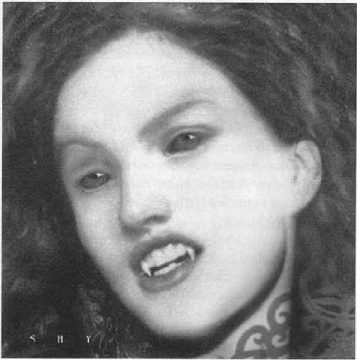
Sobriquet: Mrs.McGinley for formal occasions, to her friends, she is just Ruth.
Appearance: Long, fiery red hair and green eyes mark Ruth's Irish heritage. She has even retained her freckles in unlife. Among mortals, she wears fashionable, if conservative, dresses. When she travels outside the city or on Kindred business, she wears jeans, loose shirts, cowboy boots, a black duster and a cowboy hat. No matter what Ruth wears, however, her matched pair of vintage Colt Peacemakers are never far from her grasp.
Behavior: Ruth doesn't walk anywhere, she swaggers. She struts around with a confidence that is infectious. She does whatever she feels needs to be done, come Hell or high-water. People have a tendency to get out of her way, and those who fail to show respect risk an immediate meeting with their creator. Even when she isn't wearing her six-guns, she seems to be armed and dangerous. Ruth is always in control of the situation, even when she isn't. Living as an outlaw, she picked up the habit of constantly looking over her shoulder and checking for the nearest exits. Ruth constantly assumes that there is someone out there who wants to get back at her for some reason or another. She possesses more than a touch of paranoia concerning those she struggled with in the past.
History:
Recent Events:
Don Carlos -- Nosferatu Primogen of Houston
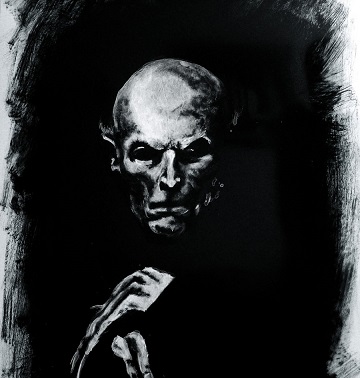
Sobriquet: My Lord,...sire,...your Grace and ...that damn Spaniard! (by those who hate him).
Appearance:
Behavior:
History:
Recent Events:
Carson Longbaugh -- Toreador Primogen of Houston
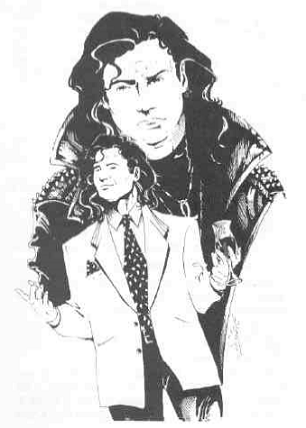
Sobriquet: Mister Longbaugh while in Elysium, but just plain Carson the rest of the time.
Appearance: A medium-size man with sandy blond hair and a mustache. Carson has a deep, mellow voice and favors Western-style suits, Stetson hats and Tony Lama cowboy boots.
Behavior: Carson is a rarity among vampires, laid-back and mellow, nothing ever seems to bother him. He has a strong Texas accent, as every word slides out in a deep drawl and Carson always has a slight, enigmatic smile on his face.
History:
Recent Events:
Constantin Addams -- Tremere Primogen of Houston

Sobriquet: Primogen or Lord in public and Mr. Addams or Constantin in private venues.
Appearance:
Behavior:
History: Famed developer of the Faux Path.
Recent Events:
- -- <<Constantin Addams's Statistics>>
Galen of Pergamon -- Ventrue Primogen of Houston & Kindred Physician
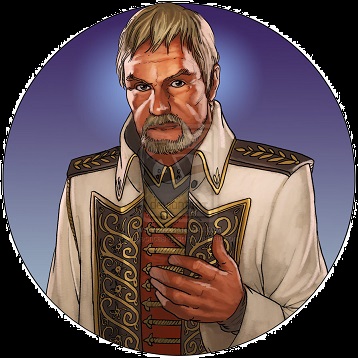
Quote: Dealing with the Followers of Set is, in effect, dealing with the Devil. Yes, they have their uses, but then so does an atomic bomb. Like said A-bomb, the Setites should be handled with extreme caution.
Sobriquet: Primogen, Physician or simple Galen depending on who is addressing the Primogen and the circumstances.
Appearance: Galen stands out in a crowd, regardless of what crowd he might be in, he stands out. Among the Kindred, he stands out by having been embraced in his mortal senescence, late sixties or early seventies. The second reason is his archaic style of dress, for Galen often wears a variety costumes and uniforms similar to those of a historical nature and varying from ancient Rome to the early 20th century. This unique behavior draws a certain amount of bemused criticism from his younger Kindred and from the mortals who interact with him, despite this, or perhaps in-spite of this, Galen continue to luxuriate in the costumes of his past and by doing so he has earned a grudging degree of respect from the callow neonates of Houston.
Physically, Galen appears to be a nearly perfect specimen of an elderly male in excellent health. He is quite short for the modern age, standing just about five foot tall and weighing no more than a hundred and forty pounds. Though quite clearly not an athlete, he does appear to be in excellent physical condition. His hair is a dark silver, which is coiffed in oiled ringlets across his forehead, but is otherwise simply kept. He also sports a neatly trimmed silver beard that delineates his face rather than concealing some imagined defect and his arching silver eyebrows frame dark brown eyes that convey centuries of empathy and experience. He wears no jewelry whatsoever, though he does often wear a variety of bladed weapons that accessorize his historical costumes.
Behavior: Galen radiates solidity, and regardless of the circumstances, a deep and abiding calm that is both infections and sedative in nature. While given to a certain degree of pomp and circumstance, which seems easily forgivable in a creature his age, Galen can be surprisingly forthright and direct in conversation. He is also unusual in that he bears a distinct sardonic sense of humor, but with a carefully calculated degree of acerbic amusement for those less fortunate than himself and for those he finds unworthy, a downright caustic vitriol. Despite this, Galen is characterized by his empathy, not only for the mortal masses, but for his fellow Kindred and he can be surprisingly kind to the other vampires of Houston, if a touch patronizing in a pedagogic fashion. Though clearly well meaning, he is extremely cautious of the other Kindred, often to the degree of paranoia, for in the past or so he claims, his well meaning empathy was mistaken for pity with dire results.
History: Aelius Galenus or Claudius Galenus, better known as Galen of Pergamon was a prominent Greek physician, surgeon and philosopher in the Roman empire.Arguably the most accomplished of all medical researchers of antiquity, Galen influenced the development of various scientific disciplines, including anatomy, physiology, pathology, pharmacology, and neurology, as well as philosophy and logic.
The son of Aelius Nicon, a wealthy architect with scholarly interests, Galen received a comprehensive education that prepared him for a successful career as a physician and philosopher. He traveled extensively, exposing himself to a wide variety of medical theories and discoveries before settling in Rome, where he served prominent members of Roman society and eventually was given the position of personal physician to several emperors.
Galen's understanding of anatomy and medicine was principally influenced by the then-current theory of humorism, as advanced by ancient Greek physicians such as Hippocrates. His theories dominated and influenced Western medical science for more than 1,300 years. His anatomical reports, based mainly on dissection of monkeys, especially the Barbary Macaque, and pigs, remained uncontested until 1543, when printed descriptions and illustrations of human dissections were published in the seminal work De humani corporis fabrica by Andreas Vesalius where Galen's physiological theory was accommodated to these new observations. Galen's theory of the physiology of the circulatory system endured until 1628, when William Harvey published his treatise entitled De motu cordis, in which he established that blood circulates, with the heart acting as a pump. Medical students continued to study Galen's writings until well into the 19th century. Galen conducted many nerve ligation experiments that supported the theory, which is still accepted today, that the brain controls all the motions of the muscles by means of the cranial and peripheral nervous systems.
Galen saw himself as both a physician and a philosopher, as he wrote in his treatise entitled That the Best Physician is also a Philosopher. Galen was very interested in the debate between the rationalist and empiricist medical sects, and his use of direct observation, dissection and vivisection represents a complex middle ground between the extremes of those two viewpoints. Many of his works have been preserved and/or translated from the original Greek, although many were destroyed and some credited to him are believed to be spurious. Although there is some debate over the date of his death, he was no younger than seventy when he died.
Early life: AD 129–161
Galen's name Γαληνός, Galēnos comes from the adjective "γαληνός", "calm".
Galen describes his early life in On the affections of the mind. He was born in September 129 AD; his father, Aelius Nicon, was a wealthy patrician, an architect and builder, with eclectic interests including philosophy, mathematics, logic, astronomy, agriculture and literature. Galen describes his father as a "highly amiable, just, good and benevolent man". At that time Pergamon (modern-day Bergama, Turkey) was a major cultural and intellectual center, noted for its library (Eumenes II), second only to that in Alexandria, and attracted both Stoic and Platonic philosophers, to whom Galen was exposed at age 14. His studies also took in each of the principal philosophical systems of the time, including Aristotelian and Epicurean. His father had planned a traditional career for Galen in philosophy or politics and took care to expose him to literary and philosophical influences. However, Galen states that in around 145 AD his father had a dream in which the god Asclepius (Aesculapius) appeared and commanded Nicon to send his son to study medicine. Again, no expense was spared, and following his earlier liberal education, at 16 he began studies at the prestigious local sanctuary or Asclepieum dedicated to Asclepius, god of medicine, as a θεραπευτής (therapeutes, or attendant) for four years. There he came under the influence of men like Aeschrion of Pergamon, Stratonicus and Satyrus. Asclepiea functioned as spas or sanitoria to which the sick would come to seek the ministrations of the priesthood. The temple at Pergamon was eagerly sought by Romans in search of a cure. It was also the haunt of notable people such as Claudius Charax the historian, Aelius Aristides the orator, Polemo the sophist, and Cuspius Rufinus the Consul.
In 148, when he was 19, his father died, leaving him independently wealthy. He then followed the advice he found in Hippocrates' teaching and traveled and studied widely including such destinations as Smyrna (now Izmir), Corinth, Crete, Cilicia (now Çukurova), Cyprus, and finally the great medical school of Alexandria, exposing himself to the various schools of thought in medicine. In 157, aged 28, he returned to Pergamon as physician to the gladiators of the High Priest of Asia, one of the most influential and wealthiest men in Asia. Galen claims that the High Priest chose him over other physicians after he eviscerated an ape and challenged other physicians to repair the damage. When they refused, Galen performed the surgery himself and in so doing won the favor of the High Priest of Asia. Over his four years there he learned the importance of diet, fitness, hygiene and preventive measures, as well as living anatomy, and the treatment of fractures and severe trauma, referring to their wounds as "windows into the body". Only five deaths among the gladiators occurred while he held the post, compared to sixty in his predecessor's time, a result that is in general ascribed to the attention he paid to their wounds. At the same time he pursued studies in theoretical medicine and philosophy.
Later years: AD 162–217
Galen went to Rome in 162 and made his mark as a practicing physician. His impatience brought him into conflict with other doctors and he felt menaced by them. His demonstrations there antagonized the less able and original physicians in the city. They plotted against him and he feared he might be driven away or poisoned, so he left the city.
Rome engaged in foreign wars in 161. Marcus Aurelius and his colleague Lucius Verus were in the north fighting the Marcomanni. During the autumn of 169 when Roman troops were returning to Aquileia, the great plague broke out, and the emperor summoned Galen back to Rome. He was ordered to accompany Marcus and Verus to Germany as the court physician. In the following spring Marcus was persuaded to release Galen after receiving a report that Asclepius was against the project. He was left behind to act as physician to the imperial heir Commodus. It was here in court that Galen wrote extensively on medical subjects. Ironically, Lucius Verus died in 169, and Marcus Aurelius himself died in 180, both victims of the plague.
Galen was the physician to Commodus for much of the emperor’s life and treated his common illnesses. According to Dio Cassius 72.14.3–4, in about 189, under Commodus’ reign, a pestilence occurred, the largest of which he had knowledge, in which 2,000 people died in Rome each day. It is most likely that this was the same plague that struck Rome during Marcus Aurelius’ reign.
Galen became physician to Septimius Severus during his reign in Rome. Galen compliments Severus and Caracalla on keeping a supply of drugs for their friends and mentions three cases in which they had been of use in 198.
The Antonine Plague
The Antonine Plague was named after Marcus Aurelius’ family name of Antoninus. It was also known as the Plague of Galen and holds an important place in medicinal history because of its association with Galen. Galen had first hand knowledge of the disease. He was in Rome when it struck in 166 AD, and was also present in the winter of 168–69 during an outbreak among troops stationed at Aquileia. He had experience with the epidemic, referring to it as very long lasting, and describes its symptoms and his treatment of it. Unfortunately, his references to the plague are scattered and brief. Galen was not trying to present a description of the disease so that it could be recognized in future generations; he was more interested in the treatment and physical effects of the disease. For example, in his writings about a young man afflicted with the plague, he concentrated on the treatment of internal and external ulcerations. According to Niebuhr "this pestilence must have raged with incredible fury; it carried off innumerable victims. The ancient world never recovered from the blow inflicted upon it by the plague that visited it in the reign of M. Aurelius." The mortality rate of the plague was 7–10 percent; the outbreak in 165–6–168 would have caused approximately 3.5 to 5 million deaths. Otto Seek believes that over half the population of the empire perished. J. F. Gilliam believes that the Antonine plague probably caused more deaths than any other epidemic during the empire before the mid-3rd century. It is believed that the Antonine Plague was smallpox, because though his description is incomplete, Galen gave enough information to enable a firm identification of the disease.
Galen notes that the exanthema covered the victim’s entire body and was usually black. The exanthem became rough and scabby where there was no ulceration. He states that those that were going to survive developed a black exanthem. According to Galen, it was black because of a remnant of blood putrefied in a fever blister that was pustular. His writings state that raised blisters were present in the Antonine plague, usually in the form of a blistery rash. Galen states that the skin rash was close to the one Thucydides described. Galen describes symptoms of the alimentary tract via a patient’s diarrhea and stools. If the stool was very black, the patient died. He says that the amount of black stools varied. It depended on the severity of the intestinal lesions. He observes that in cases where the stool was not black, the black exanthema appeared. Galen describes the symptoms of fever, vomiting, fetid breath, catarrh, cough, and ulceration of the larynx and trachea.
Eudemus
When Peripatetic philosopher Eudemus became ill with Quartan fever, Galen felt obliged to treat him "since he was my teacher and I happened to live nearby." Galen wrote: "I return to the case of Eudemus. He was thoroughly attacked by the three attacks of quartan ague, and the doctors had given him up, as it was now mid-winter." Some Roman physicians criticized Galen for his use of the prognosis in his treatment of Eudemus. This practice conflicted with the then-current standard of care, which relied upon divination and mysticism. Galen retaliated against his detractors by defending his own methods. Garcia-Ballester quotes Galen as saying: "In order to diagnose, one must observe and reason. This was the basis of his criticism of the doctors who proceeded alogos and askeptos." However, Eudemus warned Galen that engaging in conflict with these physicians could lead to his assassination. "Eudemus said this, and more to the same effect; he added that if they were not able to harm me by unscrupulous conduct they would proceed to attempts at poisoning. Among other things he told me that, some ten years before, a young man had come to the city and had given, like me practical demonstrations of the resources of our art; this young man was put to death by poison, together with two servants who accompanied him."
Garcia-Ballester says the following of Galen’s use of prognosis: "In modern medicine, we are used to distinguishing between the diagnostic judgment (the scientific knowledge of what a patient has) and the prognostic judgment (the conjecture about what will happen to him.) Galen, like the Hippocratics, was not. For him, to understand a clinical case technically, ‘to diagnose’, was among other things, to know with greater or lesser certainty the outcome for the patient, ‘to prognosticate’. Prognosis, then, is one of the essential problems and most important objectives of Galenic diagnosis. Galen was concerned to distinguish it from divination or prophecy, both to improve diagnosis technically and to enhance the physician’s reputation.
His Death
The 11th-century Suda lexicon states that Galen died at the age of 70, which would place his death in about the year 199. However, there is a reference in Galen's treatise "On Theriac to Piso" (which may, however, be spurious) to events of 204. There are also statements in Arabic sources that he died at age 87, after 17 years studying medicine and 70 practicing it, which would mean he died about 217. Nutton believes that "On Theriac to Piso" is genuine, that the Arabic sources are correct, and that the Suda has erroneously interpreted the 70 years of Galen's career in the Arabic tradition as referring to his whole lifespan. Boudon-Millot more or less concurs and favors a date of 216.
Recent Events:
- -- <<Galen's Statistics>>
Stevie Reno -- Sheriff of Houston
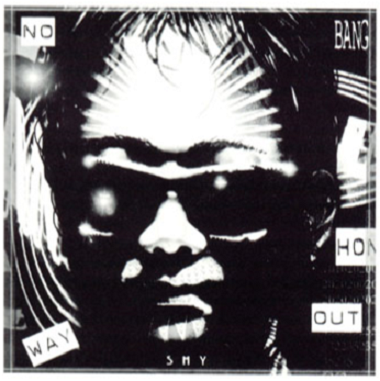
Quote: "Assamite Antitribu? What's the difference? A killer's a killer. Maybe these guys are even more untrustworthy than their independent kin, but how can you tell where Assamites are concerned?"
Sobriquet: The Butcher of Houston...
Appearance:
Behavior:
History:
Recent Events:
Everett Thig -- Keeper of Elysium in Houston
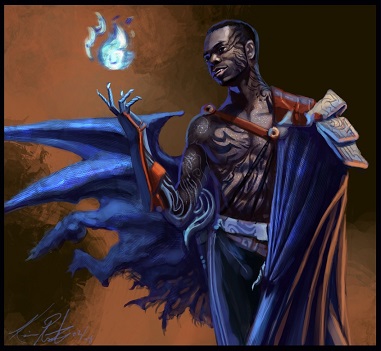
Quote: "Oh, right, like there is any such thing as Blood Brothers. And we drink infant's eyeball fluid and bite the heads off bats and take out our ribs so we can blow ourselves, too. For Caine's sake, isn't there anything you fools think the Tremere haven't done?"
Sobriquet: The...Keeper of Elysium
Appearance:
Behavior:
History:
Recent Events:
Porfirio Rivero -- Samedi Scourge of Houston
Appearance:
Behavior:
History:
Recent Events:
- -- <<Porfirio Rivero's Statistics>>
Vasilica -- Gargoyle Scourge of Houston
Appearance:
Behavior:
History:
Recent Events:
- -- <<Vasilica's Statistics>>
The Rank and File Kindred of Houston
Heather Dowd -- Brujah Revolutionary and Local Hero
Appearance:
Behavior:
History:
Recent Events:
- -- <<Heather Dowd's Statistics>>
Lucia d'Avilla -- Malkavian Aristocrat and Spanish Transplant
[[]]
Sobriquet:
Appearance:
Behavior:
History:
Recent Events:
- -- <<Lucia d'Avilla's Statistics>>
Peter the Cockroach -- Nosferatu Resident and Professional Tunnel Digger
Appearance:
Behavior:
History:
Recent Events:
- -- <<Peter the Cockroach's Statistics>>
Alice Babylon -- Toreador Neonate of Houston, progeny of Carson Longbaugh and owner of the Desert Rose Cantina
Appearance:
Behavior:
History:
Recent Events:
- -- <<Alice Babylon's Statistics>>
Cinda Lowell -- Toreador Novelist and Local Harpy
[[]]
Sobriquet:
Appearance:
Behavior:
History:
Recent Events:
- -- <<Cinda Lowell's Statistics>>
Athosides -- Tremere Regent and Noteworthy Archivist
[[]]
Sobriquet:
Appearance:
Behavior:
History:
Recent Events: Tremere Regent of the Seventh Circle, newly promoted upon the death of his predecessor.
- -- <<Athosides' Statistics>>
Dennis Rundgren -- Ventrue Securities Broker
[[]]
Sobriquet:
Appearance:
Behavior:
History:
Recent Events:
- -- <<Dennis Rundgren's Statistics>>
Camarilla Guests - & - The Survivors of Dallas-Fort-Worth
Crenshaw Ghast -- Former Primogen of Dallas and Elder Refugee
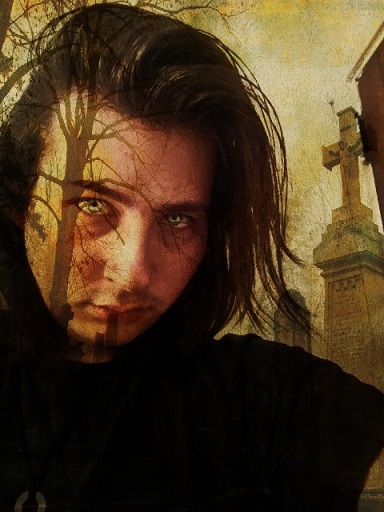
Quote: Of the darkness we are all born. The demons and wraiths are your siblings and the lupines are your cousins. All which is supernatural was born of the Queen of Night: Lilith, our dark mother. One night she will return, as she has before in legend, to murder her children and reclaim the power she has lent us for our short, macabre unlifetimes. We must prepare for her; we must discover ourselves in her teachings, for all our dilemmas, and the solutions to them, reside in her.
Sobriquet: Primogen...Er...Elder...Mr.Ghast?
Appearance:
Behavior:
History:
Recent Events:
- -- <<Crenshaw Ghast's Statistics>>
Pitch Bend -- Malkavian Guitarist and Dallas Refugee
[[]]
Sobriquet:
Appearance:
Behavior:
History:
Recent Events:
- -- <<Pitch Bend's Statistics>>
Mort -- Nosferatu Agent Provocateur and Refugee from Dallas
Appearance:
Behavior:
History:
Recent Events:
- -- <<Mort's Statistics>>
Gordon Crush Lawler -- Ventrue Enforcer and Camarilla Volunteer
[[]]
Sobriquet:
Appearance:
Behavior:
History:
Recent Events:
- -- <<Gordon Crush Lawler's Statistics>>
The Independent Clans in Houston
Enzo Giovanni -- Giovanni Elder of Houston

Sobriquet: Mister Giovanni or Director Giovanni
Appearance: Enzo Giovanni is a big man, tall and muscular, not that you could tell as he carries an extra hundred pounds around his middle. He is six-foot and two-inches tall and weights a good three hundred pounds. Enzo is a rarity among the undead, a fat vampire, but he doesn't let his girth stand in the way of a stylish way of life. He wears custom tailored suits of light colored fabrics, to lessen the impression of pudginess. Enzo is of medium dark complexion, like coffee with a lot of creme. And like good Italian coffee, his tan skin has faint wrinkles that add up to age and presumably wisdom. His black hair is shot with gray, as is he van-dyke goatee. He only wears gold jewelry, cufflinks emblazoned with the Gothic G for Clan Giovanni and a gold Sky Moon Tourbillon wristwatch which runs a cool two million for the businessman who has everything.
Behavior: Enzo is a jovial fellow, he can well afford to be a one of the world's richest men. Despite his wealth and power, he is quite affable and gregarious. He can sit and talk all night, about most any subject and he throws the most amazing parties. Despite being a Giovanni, he is the darling of Houston's night society and he has friends in the most unlikely of places.
History: As far as anyone can remember, Enzo Giovanni's history began with his election to the board of directs of Endron. Though he occasionally makes references to his early days as a media mogul in London, there is virtually no evidence that Enzo ever visited, let alone lived in London. Considering Prince Mithras' decree against Clan Giovanni and the strength of Mithras' Ventrue in London, it seems impossible that the agreeable Enzo could have survived there for any length of time without drawing their ire. Though, there are plenty of financial records that corroborate his story, principally those of Irish Eyes Enterprises,Ltd., a huge business conglomerate that concentrated primarily on media franchises in England and North America. Unfortunately, that corporate entity dissolved into several different lesser corporations when it was acquired by Endron International and it seems doubtful that any of the original employees of Enzo's media conglomerate still work for Endron, after all these years.
Of the man himself, there are no verifiable facts that corroborate or disprove Enzo's autobiography. According to the many stories that Enzo has told in Elysium over the years since his arrival in Houston, he was born a scion of an impoverished and minor branch of the Giovanni family. His father was a typesetter for a Venetian printer, and Enzo grew up with ink on his fingers. He was raised to believe he would take up his father's trade, but the advent of the electromagnetic telegraph changed all that. As a youth, he applied and was accepted as an apprentice telegraph operator, unfortunately, the job was much too tedious for Enzo, but he saw the possibilities in it and invested all his wages in the newfangled gadget. The investment paid off far better than Enzo could have imagined for Europe and the Americas adopted the gizmo wholeheartedly. Shortly thereafter, he purchased the print-house that employed his father and in doing so, gained the attention of his patron and sire within Clan Giovanni. The rest, Enzo says, is history. He immigrated to the United States after World War II and stayed with family until he saw his opportunity in Houston, Texas in the 1970s. The oil business was a big change for Enzo, but as a master of the arts of communication, he found a substantial position within one of the oil companies that sought to change its image with the public, Endron. But to Enzo, Endron is just an investment and with the oil industry on its last legs, he has set his sights on returning to the arena of media manipulation; a fact, that the new prince of Houston has used to his advantage in covering up the Sabbat-Camarilla war in the New Republic of Texas. Thus, once again, Enzo has found a niche in which to thrive and though he has no official title, he is know around Elysium as the prince's Minister of Information.
Recent Events:
- -- <<Enzo Giovanni's Statistics>>
Niv Rothstein -- Giovanni Ancilla and Personal Assistant to Mr. Enzo Giovanni
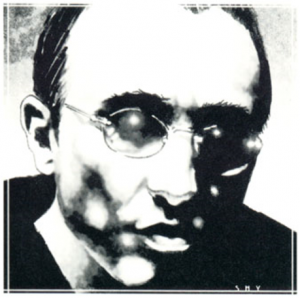
Sobriquet: Mister Rothstein to just about everyone but Enzo and Niv to his boss and his few friends
Appearance:
Behavior:
History:
Recent Events:
- -- <<Niv Rothstein's Statistics>>
Edwardo Putanesca -- Giovanni Neonate and Personal Driver of Mr. Giovanni
File:Lasombra B.E.Zieger.jpg
Sobriquet: Putanesca! as his boss Enzo calls him, Mister Putanesca to virtually everyone else, and Edwardo to his few acquaintances in Houston.
Appearance:
Behavior:
History:
Recent Events:
- -- [[]] --
- -- [[]] --
- -- [[]] --
- -- [[]] --
- -- [[]] --
- -- [[]] --
- -- [[]] --
- -- [[]] --
- -- [[]] --
- -- [[]] --
- -- [[]] --
- -- [[]] --
- -- [[]] --
Evans Rogers -- Freelance Assamite Bodyguard -- Currently on assignment in Houston
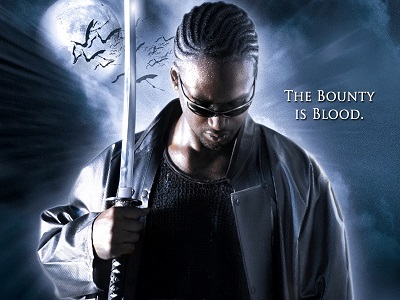
Sobriquet: E.R. as in Emergency Response...or...If you call him, several individuals are going to the Emergency Room.
Appearance:
Behavior:
History:
Recent Events:
Websites
http://vampirerpg.free.fr/Genealogy/
http://en.wikipedia.org/wiki/Houston
http://www.houstonarchitecture.com/haif/best-content/
http://forum.skyscraperpage.com/showthread.php?t=151881
http://www.marinelink.com/news/maritime/offshore-technology-conference.aspx
